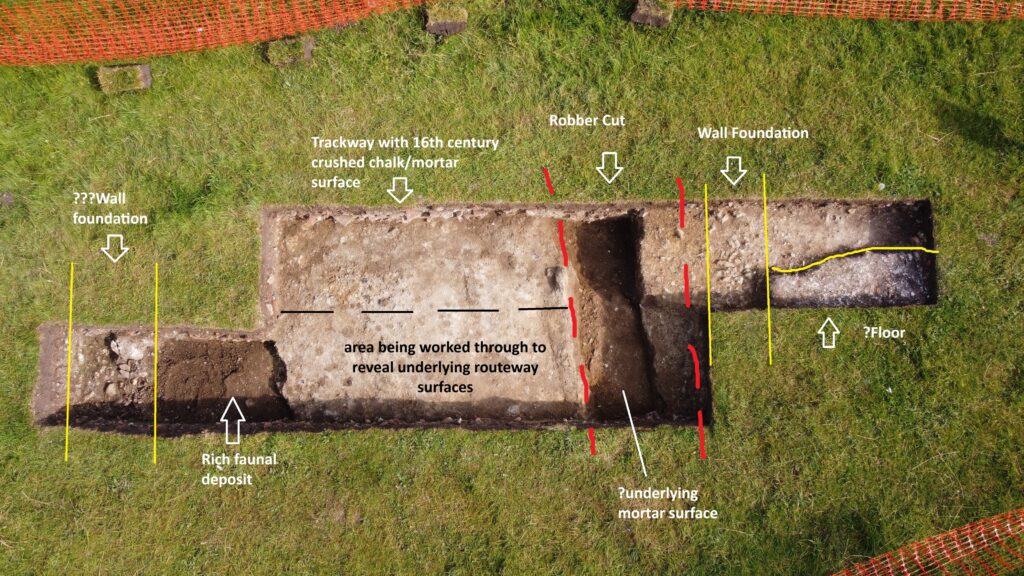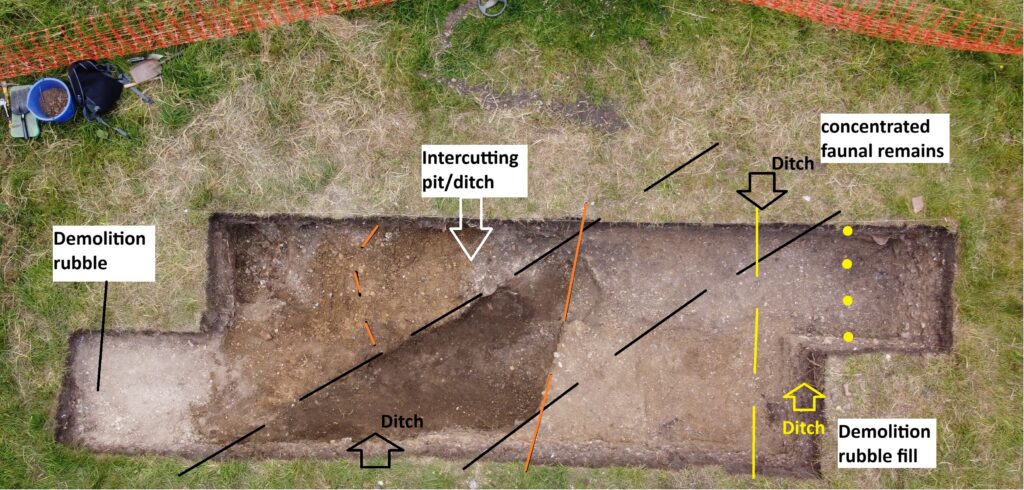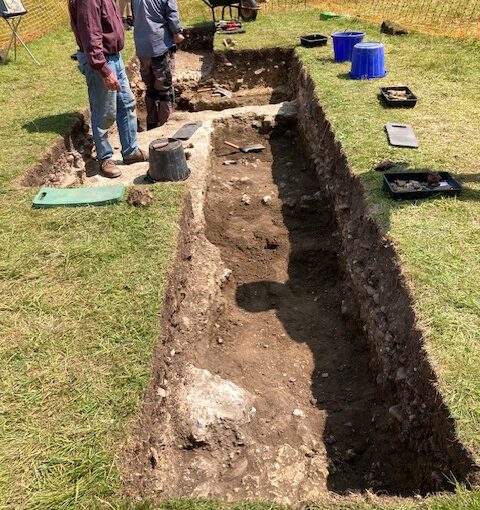As we head in to the last week of digging here’s what the team has found so far at the end of week two.
Subscribe to our quarterly newsletter

Trench 1
As previously mentioned, trench 1 was sited to explore the suspected ‘gatehouse’ entrance to the site as indicated by earlier resistivity survey. This reveals evidence throughout for the concerted demolition of the site; activity which with the almost total absence of artefacts dating beyond the 16th century appears to have been undertaken shortly after its seizure by the Crown with the demise of Margaret Pole, Countess of Salisbury in 1541.
Ephemeral evidence for residual structural foundations (flint, brick, roof tile, clunch, daub etc) have been found to frame a surviving entrance routeway of beaten chalk sand/mortar which is approximately 6m in width and is associated with ceramic dating evidence.
Sampling of this routeway context reveals it as the last of a number of trackways using it appears the same entrance point to the estate and excavation continues to explore these earlier routeway surfaces and ‘associated’ ditches. All such evidence is consistent with the geophysical findings.
Subscribe to our quarterly newsletter

Trench 2
The historical evidence suggests in the mid-14th century the castle site went through a major refurbishment and between 1350 and 1550 it is likely to have been refurbished again and again so we wanted to put a trench where it wasn’t disturbed by those later efforts and this has proven its value in terms of that there is no evidence of any structures. The ditch at far end is probably 15th/16th century and full of Tudor demolition material. At south end is full of sand brought here as has a lot of material to level this part of the site. The part with the darker dirt is a huge ditch which just keeps going. It is 14th century material coming out of this ditch, although not a huge amount and it is mainly stacks of animal bones but some interesting bits of pot. Like the other ditch it is likely to be amongst the earliest features this far on this site.
Imagine a landscape which doesn’t have this gatehouse, and these ditches may well have been there before that. The object here is to find the oldest bone at the lowest level because one of the dating opportunities is to date the animal bone through carbon dating, but pottery is less precise for dating.
With only one week to go of the excavation the key focus is to continue to get down to the lowest possible level allowed of 1.2 metres with the aim of finding suitable material to use to try and date the earliest period of use of the site.
